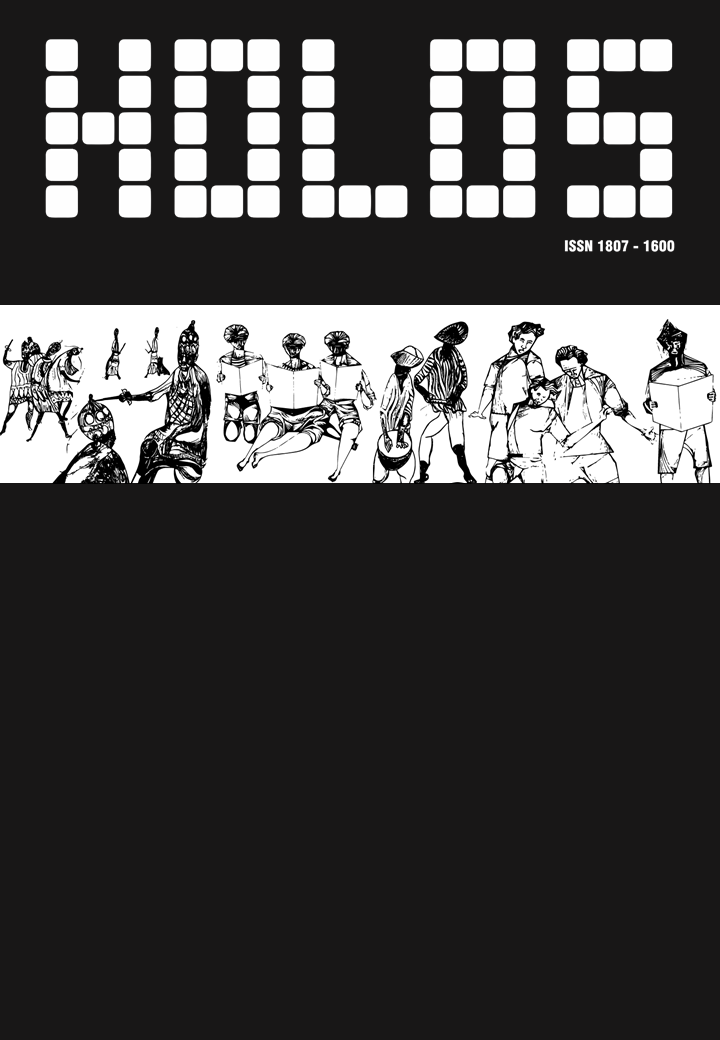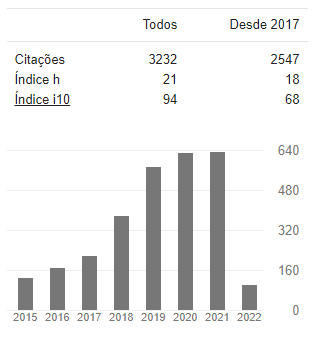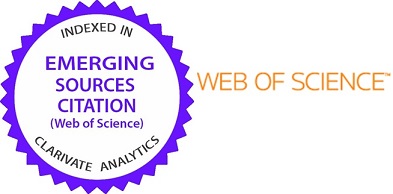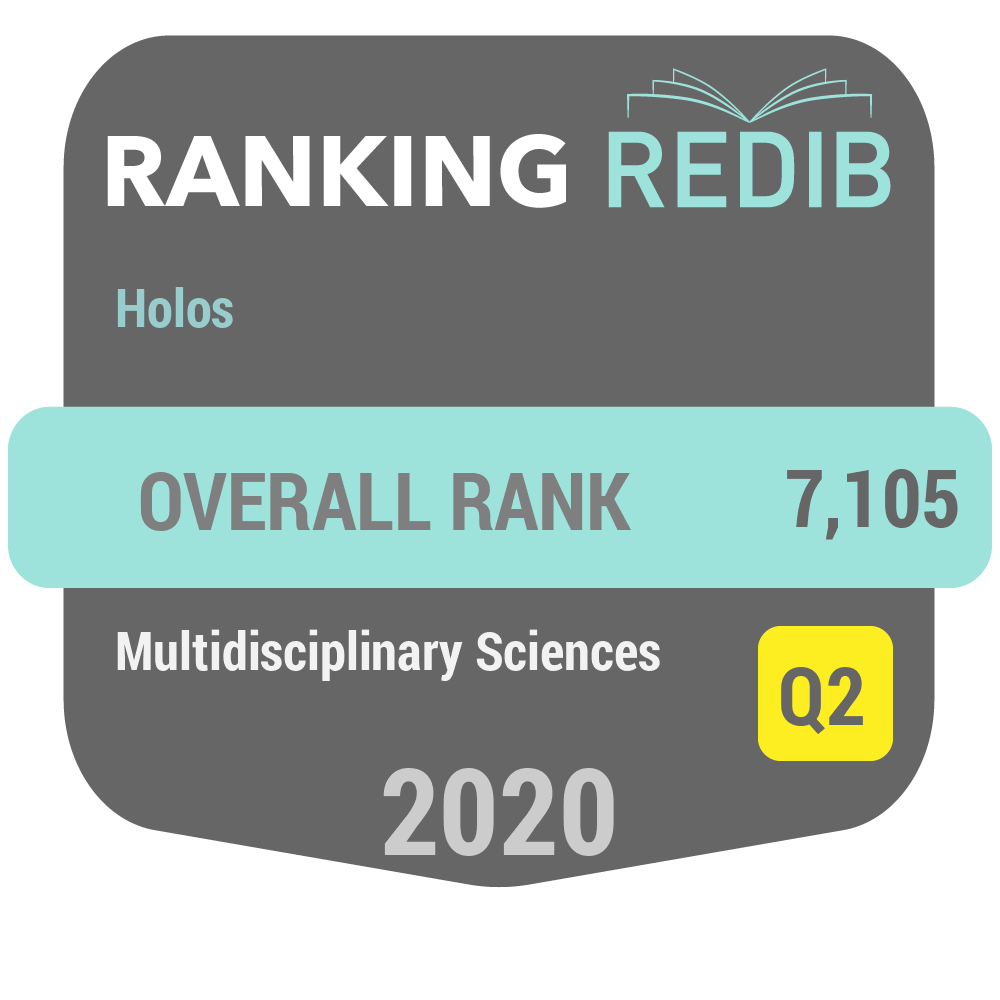CHEMICAL COMPOSITION OF WHOLE GRAINS IN COMMON BEANS LANDRACES AND BREEDING GENOTYPES
DOI:
https://doi.org/10.15628/holos.2015.1996Resumo
The common bean has been object of breeding programs aiming the development of new cultivars adapted to varied production system and shown differentiated nutritional characteristics. Due a genetic diversity existent the landraces can be used directly for cropping, for present characteristics desirable. Little information exists about mineral content and other quality traits for those bean landraces. The aim of this paper was to verify the variability for grain nutricional caracters in breeding cultivars and landraces of bean from Rio Grande do Sul state, Brazil. The experiment was conducted in 2009/2010 in Experimental Station Cascata, of Embrapa Temperate Agriculture. In whole grain of 54 bean genotypes with black and no black coat were determined macroelements (nitrogen, phosphorus, potash, calcium, magnesium and sulfur), oligoelements (iron, manganese, zinc and cuprum), protein and ash content, insoluble fiber, digestive nutrient and antioxidant astragalina. The results shown that the landraces varieties presents nutritional composition of macro and oligoelements, fibers, protein and ash contents in whole grain similar than that of breeding lines and cultivars. The black coat grain from breeding programs showed better nutritional quality for macro and oligoelements content than coloured grain, highlighting TB 02-04 e TB 01-01. The landraces with coloured grains TB 02-26, TB 02-24 and TB 03-13 showed the high levels of astragaline.Downloads
Referências
ANTUNES, P.L. et al. Valor nutricional de feijão (Phaseolus vulgaris L.), cultivares Rico 23, Carioca, Piratã-1 e Rosinha-G2. Revista Brasileira de Agrociência, Pelotas, v.1, n.1, p.12-18, 1995.
AOAC - ASSOCIATION OF OFFICIAL AGRICULTURAL CHEMISTS. 1995. Official methods of analysis of the AOAC. 16 ed. Washington, DC.: AOAC, 1995. 2000p.
BARAMPAMA, Z.; SIMARD, R. E. Nutrient composition, protein quality and antinutritional factors of some varieties of dry beans (Phaseolus vulgaris L.) grown in Burundi. Food Chemistry, Oxford, v. 47, n. 2, p. 157-167, 1993.
BRESSANI, R. et al. Evaluación de los métodos para estabelecer el contenido de polifenoles en frijol crudo y cocido, y efecto que estos provocan en la digestibilidad de la proteina. Archivos Latinoamericanos de Nutrición, Guatemala, v.41, n.4, p.569-583, 1991.
CEREZO-MESA, M.; ESQUINAS-ALCAZAR, J.T. El germoplasma vegetal em los países del Cono Sur de América Latina. Roma: Consejo Internacional de Recursos Fitogenéticos, 1986, 183p.
CORREIA, H.A. et al. Polyphenolic Profile Characterization of Agrimona eupatoria L. by HPLC with different detection devices. Biomedical Chromatography, 20: 88-94. 2006.
DALLACORTE, A. et al. Environment effect on grain quality in early common bean cultivars and lines. Crop Breeding and Applied Biotechnology, Maringá, v.3, n.3, p.193-202, 2003.
DAVIS, D.R. Declining Fruit and Vegetable Nutrient Composition: What Is the Evidence? Hortscience, Alexandria, v. 44, n. 1, p. 15-19, 2009.
ELIAS, H.T. et al. Variabilidade genética em germoplasma tradicional de feijão-preto em Santa Catarina. Pesquisa Agropecuária Brasileira, Brasília, v.42, n.10, p.1443-1449, out. 2007.
FRANCO, G. Tabela de composição química dos alimentos. Rio de Janeiro: Atheneu, 9.ed. 1999. 307p.
GONZÁLEZ de MEJÍA, E. et al. Tannins, trypsin inhibitors and lectin cytotoxicity in Phaseolus acutifolius and Phaseolus vulgaris. Plant Foods Human Nutrition, v.60, p. 137-145, 2005.
HU,Y. et al. Kaempferol in Red and Pinto Bean Seed (Phaseolus vulgaris L.) coats inhibits Iron Bioavaliability Using in Vitro Digestion/Human Caco-2 Cell Model, Jounal Agricultural Food and Chemistry, v.54, p. 954-961, 2006.
LAJOLO, F.M.; GENOVESE, M.I.; MENEZES, E.W. Qualidade nutricional. In: ARAÚJO, R.S. et al. (coord). Cultura do feijoeiro comum no Brasil. Piracicaba: POTAFOS, 1996. 786p.
MARSCHNER, H. Mineral nutrition of higher plants. London: Academic Press, 1995. 674 p.
MESQUITA, F.R. et al. Linhagens de Feijão (Phaseolus vulgaris L.): composição química e digestibilidade protéica. Ciência e Agrotecnologia, Lavras, v. 31, n. 4, p. 1114-1121, jul./ago., 2007.
PAREDES, M.C.; BECERRA, V.; TAY, J.U. Inorganic nutritional composition of common bean (Phaseolus vulgaris l.) genotypes race chile. Chilean Journal of Agricultural Research, v. 69, n. 4., p. 486-495, 2009.
PINHEIRO, C. et al. Diversity of seed mineral composition of Phaseolus vulgaris L. germplasm. Journal of Food Composition and Analysis, v. 23, p. 319–325, 2010.
PIEGAS, B. N. et al. Oligoelement levels in breeding lines and landraces of common bean from Rio Grande do Sul, Brazil. Annual Report Bean Improvement Cooperative, v.54, p. 158-161, 2011.
RAMALHO, M.A.P.; SANTOS, J.B.; ZIMMERMANN, M.J.O. Genética quantitativa em plantas autógamas: aplicações ao melhoramento do feijoeiro. UFG: Goiânia. 1993.
RIBEIRO, N. D. et al. Dissimilaridade genética para teor de proteína e fibra em grãos de feijão dos grupos preto e de cor. Revista Brasileira de Agrociência, Pelotas, v.11, n. 2, p. 167-173, abr-jun, 2005
RIBEIRO, N.D. et al. Composição de microminerais em cultivares de feijão e aplicações para o melhoramento genético. Bragantia, Campinas, v. 67, n.2.p. 267-273, 2008.
RODRIGUES, L.S. et al. Divergência genética entre cultivares locais e cultivares melhoradas de feijão. Pesquisa Agropecuária Brasileira, v.37, p.1275-1284, 2002.
SILVA, C.A. et al. Chemical composition as related to seed color of common bean. Crop Breeding and Applied Biotechnology, v. 12, p. 132-137, 2012.
SILVA, F.C. (org.) Manual de análises químicas de solos, plantas e fertilizantes. Brasilia: Embrapa Solos/Embrapa Informática Agropecuária, 1999. 370p.









































